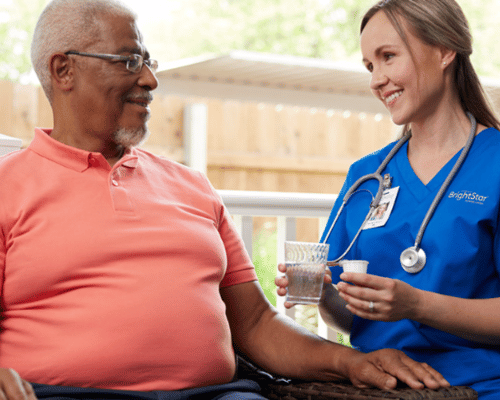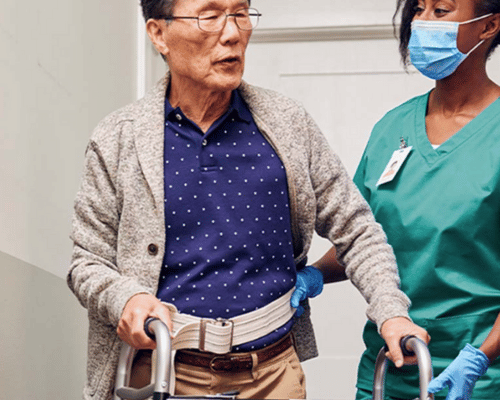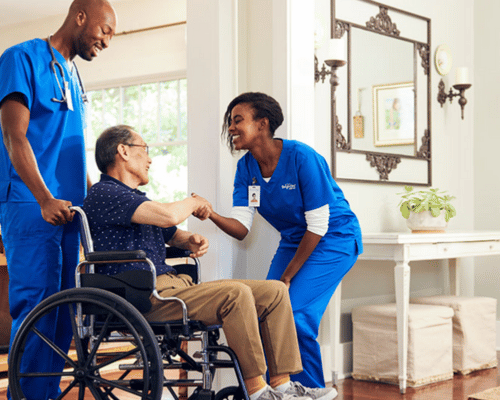A stroke, often called a "brain attack," can have profound and life-altering effects. It occurs when there's a sudden disruption in blood supply to the brain, resulting in damage to brain cells due to oxygen and nutrient deprivation. The consequences of a stroke can be devastating, ranging from paralysis to cognitive impairments. In this article, we will explore the pivotal role of early physical therapy in stroke recovery and how it can significantly enhance the quality of life for stroke survivors.
To truly appreciate the significance of early physical therapy in stroke recovery, it's imperative to gain a deeper understanding of what a stroke entails and how it profoundly impacts individuals.
A stroke occurs when a sudden and disruptive interruption of blood supply to the brain. This interruption can happen in two primary ways:
The effects of a stroke can vary significantly depending on several factors, including the size and location of the affected area of the brain. Some expected consequences of stroke include:

Time is of the essence in stroke management. The term "golden hour" often emphasizes the crucial importance of the first few hours after a stroke. During this period, medical interventions like clot-busting medications or surgical procedures can be highly effective in minimizing brain damage.
However, even beyond the immediate aftermath of a stroke, there's a critical window of opportunity for recovery. This is where early physical therapy steps in.
Early physical therapy, known as neuroplasticity, aims to harness the brain's remarkable ability to adapt and heal. During the initial stages of stroke recovery, the brain is more receptive to rewiring and relearning functions. Early physical therapy capitalizes on this by providing targeted exercises and interventions that encouraging the brain to form new neural connections.
By intervening promptly and tailoring therapies to the individual's unique needs, early physical therapy sets the stage for a more effective recovery journey. It addresses physical impairments and promotes emotional well-being and cognitive restoration, all of which are crucial aspects of stroke recovery.
Let's dive deeper into the multifaceted power of early physical therapy in stroke recovery. This intervention goes beyond mere rehabilitation; it's a holistic approach encompassing various critical aspects of a stroke survivor's journey.
Early physical therapy is a cornerstone for stroke survivors seeking to regain control over their bodies. Post-stroke, individuals often grapple with muscle weakness and coordination problems. Here's how early physical therapy transforms this challenge:

Prolonged immobility post-stroke is a breeding ground for muscle atrophy. Muscle atrophy is marked by muscle wasting and weakness, significantly affecting functional independence. Early physical therapy serves as a powerful shield against this threat:
Limited range of motion is a prevalent challenge post-stroke, impeding the ability to perform even the simplest tasks. Early physical therapy steps in to address this issue:
Pain often becomes an unwelcome companion for stroke survivors. The experience of pain can be not only uncomfortable but also debilitating. Here's how early physical therapy becomes an ally in pain management:

Regaining independence is a fundamental aspiration for stroke survivors. Early physical therapy plays a pivotal role in making this aspiration a reality:
Beyond its evident physical benefits, early physical therapy in stroke recovery wields a profound influence on the psychological well-being of individuals. Let's delve into the psychological dimensions of this transformative intervention:
Stroke survivors often grapple with a palpable loss of self-confidence due to the physical limitations imposed by their condition. This is where early physical therapy emerges as a beacon of hope:

The emotional toll of a stroke is immense. It often brings with it the unwelcome companions of depression and anxiety. Early physical therapy sessions serve as a sanctuary of support:
The impact of stroke on cognitive function can be substantial, posing another challenge to survivors. Early physical therapy, with its multifaceted approach, extends its benefits to mental well-being:

When you or a loved one are recovering from a hospitalization or transitioning from a rehabilitation center like a skilled nursing facility (SNF), the need for short-term transitional home care becomes paramount. Our nurse-led care and team-focused approach are meticulously designed to optimize your health and well-being during this critical phase.
Even if your loved one is already receiving skilled nursing care from another agency, such as a Medicare-approved group, the companion care, and personal care services offered through BrightStar® Home Care Fairfax serve as an invaluable supplement. These services extend support in meeting basic needs, including light housekeeping, companionship, family respite, dressing, personal hygiene, and ambulation (walking and mobility).
Professionally delivered care mitigates undesirable outcomes, including re-hospitalization, medication errors, and falls. Furthermore, it could contribute to reducing long-term healthcare costs by effectively preventing the worsening of health conditions.
Additionally, for those requiring therapy after surgery or recovering from a stroke, we have a dedicated team of physical, occupational, and speech therapists ready to provide comprehensive rehabilitation services in the comfort of your own home.
Understanding Stroke: A Closer Look
To truly appreciate the significance of early physical therapy in stroke recovery, it's imperative to gain a deeper understanding of what a stroke entails and how it profoundly impacts individuals.
The Stroke Mechanism
A stroke occurs when a sudden and disruptive interruption of blood supply to the brain. This interruption can happen in two primary ways:
- Ischemic Stroke: In approximately 80% of stroke cases, the interruption is caused by a blockage in a blood vessel leading to the brain. This blockage can occur due to a blood clot, plaque buildup, or other factors restricting blood flow.
- Hemorrhagic Stroke: The remaining 20% of stroke cases are hemorrhagic strokes resulting from a ruptured blood vessel in the brain. This rupture causes bleeding in or around the brain, leading to damage.
The Consequences of Stroke
The effects of a stroke can vary significantly depending on several factors, including the size and location of the affected area of the brain. Some expected consequences of stroke include:
- Paralysis: A stroke can lead to muscle weakness or complete paralysis on one side of the body, often called hemiplegia. This can affect mobility and daily activities.
- Speech and Language Difficulties: Areas of the brain responsible for speech and language can be affected, leading to aphasia—a condition where individuals struggle to understand, speak, read, or write.
- Cognitive Impairment: Stroke can result in mental challenges, such as memory problems, difficulty concentrating, and reduced problem-solving abilities.
- Emotional Impact: Stroke survivors may experience a range of emotions, including depression, anxiety, and frustration, often stemming from the frustration of coping with physical and cognitive limitations.

The Critical Time Window
Time is of the essence in stroke management. The term "golden hour" often emphasizes the crucial importance of the first few hours after a stroke. During this period, medical interventions like clot-busting medications or surgical procedures can be highly effective in minimizing brain damage.However, even beyond the immediate aftermath of a stroke, there's a critical window of opportunity for recovery. This is where early physical therapy steps in.
Early Physical Therapy: Maximizing Recovery Potential
Early physical therapy, known as neuroplasticity, aims to harness the brain's remarkable ability to adapt and heal. During the initial stages of stroke recovery, the brain is more receptive to rewiring and relearning functions. Early physical therapy capitalizes on this by providing targeted exercises and interventions that encouraging the brain to form new neural connections.By intervening promptly and tailoring therapies to the individual's unique needs, early physical therapy sets the stage for a more effective recovery journey. It addresses physical impairments and promotes emotional well-being and cognitive restoration, all of which are crucial aspects of stroke recovery.
The Power of Early Physical Therapy: A Comprehensive Breakdown
Let's dive deeper into the multifaceted power of early physical therapy in stroke recovery. This intervention goes beyond mere rehabilitation; it's a holistic approach encompassing various critical aspects of a stroke survivor's journey.
1. Regaining Motor Function
Early physical therapy is a cornerstone for stroke survivors seeking to regain control over their bodies. Post-stroke, individuals often grapple with muscle weakness and coordination problems. Here's how early physical therapy transforms this challenge:
- Tailored Exercise Regimens: Early physical therapy doesn't take a one-size-fits-all approach. Instead, it customizes exercise regimens, addressing specific muscle groups and motor deficits. These tailored exercises promote muscle strengthening and coordination.
- Regaining Control: Consistency is critical in stroke recovery. Through regular therapy sessions, stroke survivors progressively regain control over their limbs. This regained control extends beyond mere mobility; it reinstates a sense of mastery and self-confidence.

2. Preventing Muscle Atrophy
Prolonged immobility post-stroke is a breeding ground for muscle atrophy. Muscle atrophy is marked by muscle wasting and weakness, significantly affecting functional independence. Early physical therapy serves as a powerful shield against this threat:
- Active Movement and Exercises: Early physical therapy encourages dynamic movement, counteracting the muscle-wasting effects of immobility. These targeted exercises are designed to prevent muscle loss and maintain muscle mass, preserving strength and mobility.
- Enhanced Quality of Life: Maintaining muscle mass is paramount for day-to-day functionality beyond physical appearances. By combating muscle atrophy, early physical therapy contributes to a better quality of life, allowing stroke survivors to engage more fully in daily activities.
3. Enhancing Range of Motion
Limited range of motion is a prevalent challenge post-stroke, impeding the ability to perform even the simplest tasks. Early physical therapy steps in to address this issue:
- Flexibility and Joint Improvement: Early physical therapy employs specialized techniques to enhance joint flexibility and expand the range of motion. This means stroke survivors can engage in daily tasks efficiently and fluently.
- Boosting Self-Esteem: The ability to independently carry out activities that were once hindered by restricted motion is physically liberating and emotionally empowering. It bolsters self-esteem, reduces dependency on others, and fosters autonomy.
4. Effective Pain Management
Pain often becomes an unwelcome companion for stroke survivors. The experience of pain can be not only uncomfortable but also debilitating. Here's how early physical therapy becomes an ally in pain management:
- Modalities for Pain Relief: Physical therapy incorporates pain management modalities, including manual therapy, targeted stretching, and therapeutic exercises. These techniques alleviate pain and discomfort, promoting a more comfortable recovery journey.
- Enhanced Comfort: Addressing pain isn't just about physical comfort; it's about improving overall well-being. By mitigating pain, early physical therapy ensures that stroke survivors can focus on their recovery without the distraction of persistent discomfort.

5. Restoring Independence
Regaining independence is a fundamental aspiration for stroke survivors. Early physical therapy plays a pivotal role in making this aspiration a reality:
- Activities of Daily Living (ADLs): Early physical therapy places a strong emphasis on ADLs, encompassing tasks like dressing, bathing, and mobility. Therapists work closely with stroke survivors, guiding them through these activities and empowering them to regain their independence, one step at a time.
- Gradual Empowerment: Independence isn't an overnight achievement; it's a gradual journey. Early physical therapy recognizes this and empowers stroke survivors to regain control of their lives, fostering a sense of self-reliance and accomplishment.
The Psychological Boost of Early Physical Therapy in Stroke Recovery
Beyond its evident physical benefits, early physical therapy in stroke recovery wields a profound influence on the psychological well-being of individuals. Let's delve into the psychological dimensions of this transformative intervention:
6. Boosting Confidence
Stroke survivors often grapple with a palpable loss of self-confidence due to the physical limitations imposed by their condition. This is where early physical therapy emerges as a beacon of hope:
- Achieving Milestones: Early physical therapy is structured to help stroke survivors achieve tangible milestones in their recovery journey. Whether regaining the ability to walk without assistance or performing everyday tasks more independently, these accomplishments are potent catalysts for a renewed sense of self-worth.
- Fostering Self-Esteem: Every small victory in therapy reinforces the survivor's belief in their capabilities. As they witness their progress, their self-esteem steadily ascends. They start viewing themselves as stroke survivors and individuals with the resilience and determination to overcome adversity.

7. Reducing Depression and Anxiety
The emotional toll of a stroke is immense. It often brings with it the unwelcome companions of depression and anxiety. Early physical therapy sessions serve as a sanctuary of support:
- Creating a Supportive Environment: Early physical therapy sessions provide a safe and supportive space where stroke survivors can connect with therapists and fellow survivors. This sense of camaraderie alleviates the isolation that often accompanies post-stroke life.
- Alleviating Anxiety: Anxiety often stems from the uncertainty of the recovery journey. With its structured approach and measurable progress, early physical therapy offers a sense of control and direction. It helps survivors navigate their path to recovery with more confidence, reducing anxiety's grip on their lives.
8. Enhanced Cognitive Function
The impact of stroke on cognitive function can be substantial, posing another challenge to survivors. Early physical therapy, with its multifaceted approach, extends its benefits to mental well-being:
- Physical Activity and Brain Health: Research has consistently demonstrated the link between physical activity and enhanced cognitive function. Early physical therapy, focusing on exercises that engage both the body and mind, improves brain health.
- Addressing Cognitive Impairments: Cognitive impairments are not uncommon among stroke survivors. Early physical therapy recognizes this and incorporates cognitive exercises that stimulate memory, problem-solving, and attention. This comprehensive approach promotes mental recovery alongside physical rehabilitation.

Enhancing Recovery with Transitional Home Care
When you or a loved one are recovering from a hospitalization or transitioning from a rehabilitation center like a skilled nursing facility (SNF), the need for short-term transitional home care becomes paramount. Our nurse-led care and team-focused approach are meticulously designed to optimize your health and well-being during this critical phase.Even if your loved one is already receiving skilled nursing care from another agency, such as a Medicare-approved group, the companion care, and personal care services offered through BrightStar® Home Care Fairfax serve as an invaluable supplement. These services extend support in meeting basic needs, including light housekeeping, companionship, family respite, dressing, personal hygiene, and ambulation (walking and mobility).
Professionally delivered care mitigates undesirable outcomes, including re-hospitalization, medication errors, and falls. Furthermore, it could contribute to reducing long-term healthcare costs by effectively preventing the worsening of health conditions.
Additionally, for those requiring therapy after surgery or recovering from a stroke, we have a dedicated team of physical, occupational, and speech therapists ready to provide comprehensive rehabilitation services in the comfort of your own home.
